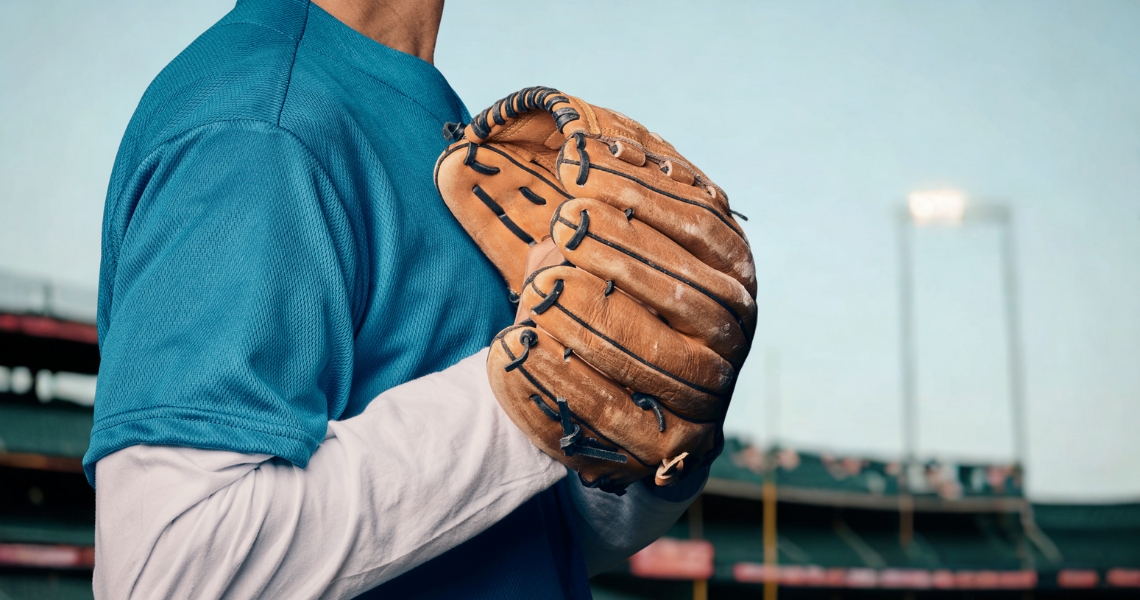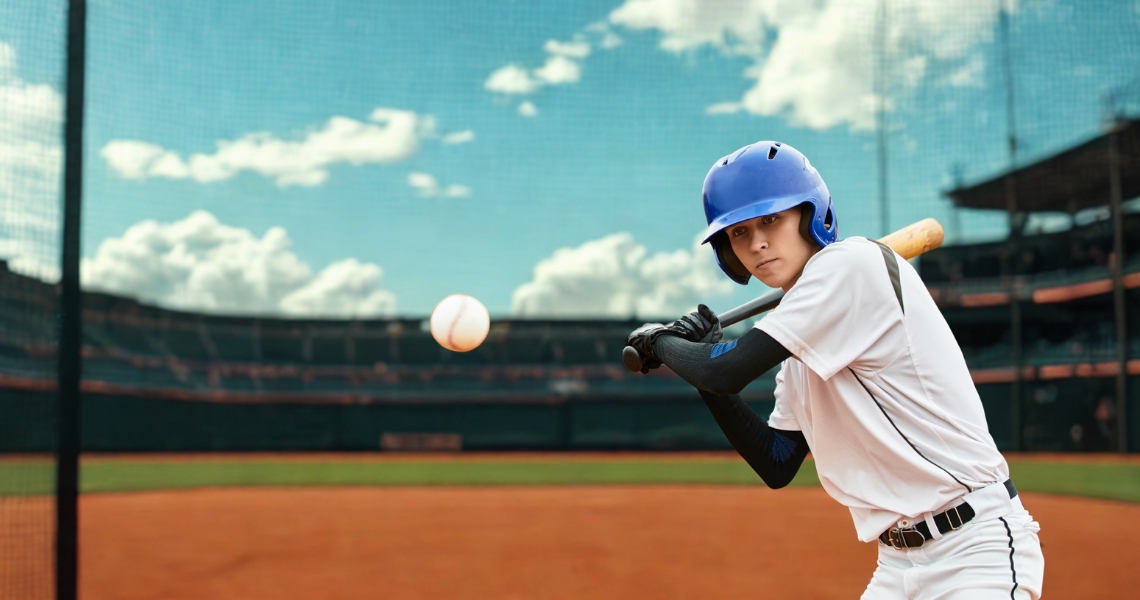Pitching is one of the most fascinating and strategic elements of baseball. While throwing hard can be an advantage, the ability to mix pitches, change speeds, and manipulate movement is what truly separates elite pitchers from the rest.
In this guide, we’ll explore the most common types of pitches in baseball, how each one works, how they’re gripped, and when to use them. Whether you’re a beginner learning how to throw a fastball or an advanced pitcher adding a cutter to your arsenal, this blog is built to sharpen your knowledge and expand your pitch selection.
Why Pitch Variety Mattersin Baseball
A great pitcher doesn’t just rely on one overpowering pitch. Instead, they use a combination of velocity, movement, and deception to outsmart hitters. By learning different pitch types, you’ll be able to:
- Keep hitters off balance
- Exploit weaknesses
- Work both sides of the plate
- Prevent predictable patterns
- Extend your outings by using finesse as much as force
Let’s break down each pitch, starting with the most foundational one: the fastball.
1. Four-Seam Fastball
- Velocity: 85–100+ mph
- Movement: Minimal; straight and true
- Grip: Index and middle fingers across the widest part of the seams
- Purpose: Establish the strike zone; challenge hitters; set up other pitches
This is the most basic and commonly used pitch in baseball. The four-seam fastball travels straight and at high velocity, making it ideal for throwing strikes and setting the tone. It’s also a foundational pitch to build the rest of your repertoire around.
2. Two-Seam Fastball (Sinker)
- Velocity: Slightly slower than four-seam
- Movement: Tailing/sinking motion toward pitcher’s arm side
- Grip: Fingers placed along the seams (parallel rather than across)
- Purpose: Induce ground balls; jam hitters; keep the ball off the barrel
The two-seamer looks like a fastball but features late arm-side movement. It’s ideal for contact pitchers who want quick outs and double plays.
3. Cut Fastball (Cutter)
- Velocity: Slightly slower than a four-seam
- Movement: Late, sharp glove-side cut
- Grip: Similar to four-seam but fingers shifted slightly off-center
- Purpose: Miss barrels; break bats; deceive without major speed change
The cutter is faster than a slider but with shorter break. It’s great for inducing weak contact.
4. Changeup
- Velocity: 10–15 mph slower than fastball
- Movement: Minimal or slight fade depending on grip
- Grip: Circle change, three-finger, or palm
- Purpose: Disrupt timing; keep hitters off the fastball
Thrown with the same arm speed as a fastball, the changeup fools hitters by arriving slower, often causing early swings.
5. Split-Finger Fastball (Splitter)
- Velocity: 5–10 mph slower than a fastball
- Movement: Late, sharp drop
- Grip: Ball split between the index and middle fingers
- Purpose: Induce swing-and-miss or weak ground balls
Tough to master, the splitter drops out of the zone late and is used as a deceptive strikeout pitch.
6. Slider
- Velocity: 5–10 mph slower than fastball
- Movement: Tight, late horizontal break with slight downward tilt
- Grip: Held like a two-seam with added middle finger pressure
- Purpose: Generate swings and misses; fool hitters mid-count
The slider combines speed and break, making it one of the most effective swing-and-miss pitches.
7. Curveball
- Velocity: 65–80 mph
- Movement: Large, looping vertical drop
- Grip: Fingers across the seams, pressure on index or middle finger
- Purpose: Change eye level; disrupt rhythm; catch batters looking
The traditional curveball offers big movement and is often used early in counts or to freeze hitters with a late drop.
8. Knuckle Curve
- Velocity: 70–80 mph
- Movement: Sharp drop similar to a curveball, but tighter
- Grip: Index finger knuckled, middle finger applies spin
- Purpose: Add deception while maintaining speed
This hybrid pitch offers a quicker drop than the traditional curveball with tighter rotation.
9. Knuckleball
- Velocity: 60–70 mph
- Movement: Unpredictable, fluttering
- Grip: Fingertips or knuckles against the seams
- Purpose: Extreme deception; confuse timing and hand-eye coordination
Difficult to master, the knuckleball is slow with no spin, making it move unpredictably.
10. Screwball (Rare)
- Velocity: 60–75 mph
- Movement: Breaks opposite of a curveball
- Grip: Similar to changeup, with pronation at release
- Purpose: Fool hitters expecting movement in the opposite direction
Rare in today’s game, the screwball breaks toward the pitcher’s arm side, acting as a reverse-breaking pitch.
When to Use Each Pitch
Pitch Type | Best Situations to Use |
Four-Seam Fastball | To get ahead in the count, challenge hitters, or elevate in the zone |
Two-Seam Fastball (Sinker) | When you want ground balls, jam same-side hitters, or stay off the barrel |
Cutter | To miss the sweet spot, jam opposite-handed hitters, or create weak contact |
Changeup | After establishing the fastball, to disrupt timing and force early swings |
Splitter | As a strikeout pitch with late drop, especially after fastballs |
Slider | To induce swing-and-miss, get chases, or keep hitters off balance |
Curveball | To change eye level, steal a strike, or drop in late for a freeze pitch |
Knuckle Curve | For tight vertical break and deception, especially in strikeout situations |
Knuckleball | To disrupt rhythm and confuse timing completely |
Screwball | To surprise hitters expecting traditional breaking movement |
Final Thoughts
Mastering the art of pitching isn’t about knowing how to throw every pitch—it’s about knowing how to throw a few with confidence, control, and purpose. A well-developed fastball paired with one reliable off-speed pitch and one strong breaking ball can be more effective than a wide mix you can’t command. Understanding the different types of pitches, how they move, and when to use them gives you a competitive advantage on the mound. The best pitchers don’t just throw hard—they think, adapt, and attack with intent. Whether you’re just learning how to pitch or refining your game at a higher level, the ability to mix speeds, change eye levels, and locate pitches consistently is what turns a good arm into a great one. Build your pitch repertoire wisely, trust your strengths, and always pitch with a plan.



